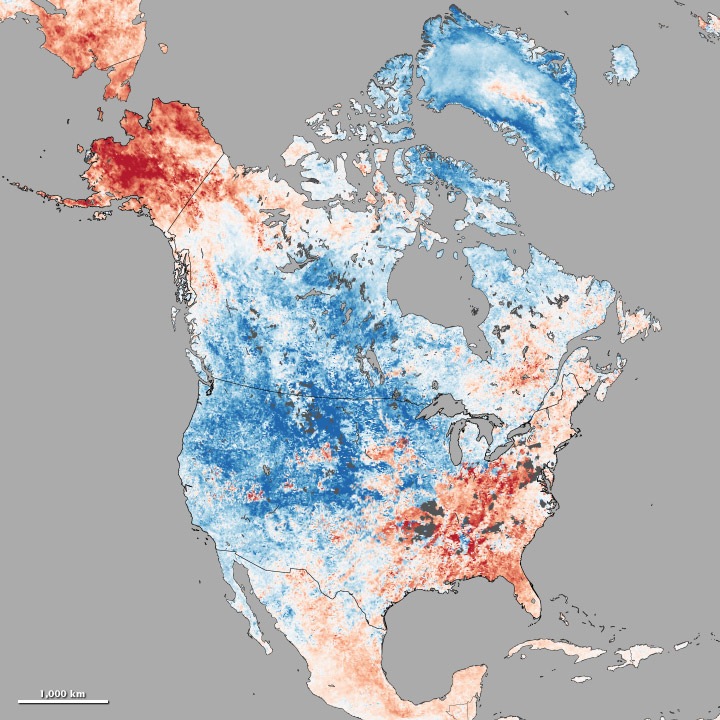A commentor on Facebook commented on this:
As the difference in temperature between polar and tropical air masses drops, the energy gradient that powers the jet stream also drops. Result is the same as when a river reaches the sea. The Rossby waves are the jet stream equivalent of a river meandering, braiding etc on a flat plain. The gradient has reduced, so the meanders are more extreme. That is why you both have record heat and cold, as the arctic and tropical air masses push further into what was once on the wrong side!
From the NASA earth observatory:
http://earthobservatory.nasa.gov/IOTD/view.php?id=82604&src=fb
acquired December 3 - 10
While the continental U.S. shivered through an abnormally cold spell in December 2013, Alaska experienced record-breaking heat. Both extremes were caused by an unusual kink in the northern hemisphere’s polar jet stream, which caused frigid Arctic air to move south and warm air to head north.
The jet stream is a fast-moving belt of westerly winds created by the convergence of cold air masses from the Arctic and warm air from lower latitudes. It’s common for it to have meanders called Rossby waves, but what was unusual in December 2013 was how amplified and contorted those waves became after a ridge of high pressure parked itself over Alaska.
-----
This map of land surface temperature anomalies for December 3–10, 2013, shows the sharp contrast between Alaska and the western U.S. Based on data from the Moderate Resolution Imaging Spectroradiometer (MODIS) on NASA’s Terra satellite, the map depicts 2013 temperatures compared to the 2001–2010 average for the same eight day period.
Areas with warmer than average temperatures are shown in red; near-normal temperatures are white; and areas that were cooler than the 2000-2011 base period are blue. Note that Land surface temperatures (LST) are distinct from the air temperatures that meteorological stations typically measure. LSTs indicate how hot the surface of the Earth would feel to the touch. From a satellite vantage point, the “surface” includes a number of materials that capture and retain heat, such as desert sand, the dark roof of a building, or the pavement of a road. As a result, daytime land surface temperatures are usually higher than air temperatures.


No comments:
Post a Comment